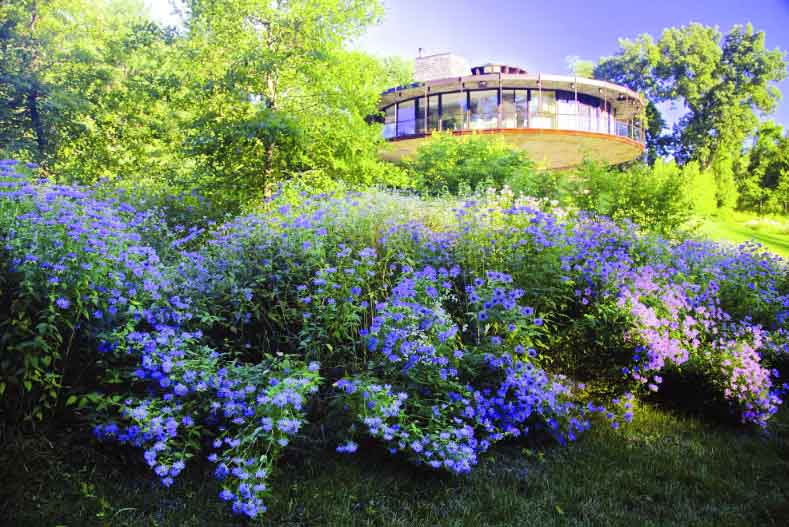The best landscape should be environmentally responsive and artistic to fully engage all living things, suggest designers
Whether it’s on an enormous estate or outside a little house, the modern garden aims for wild-looking landscapes, native species and seamless transitions to natural surroundings, according to a new book featuring the work of prominent contemporary garden designers.
In Garden Wild: Wildflower Meadows, Prairie-Style Plantings, Rockeries, Ferneries, and Other Sustainable Designs Inspired by Nature (Rizzoli), photographer Andre Baranowski explores a dozen very different gardens — all of them mostly devoid of manicured lawns and fussy pruning.
The focus, instead, is on sustainability and plant diversity. Featured garden designers include Oehme van Sweden, Fernando Caruncho, Jorge Sanchez and Piet Oudolf.
Each chapter explores a single garden, explaining the designer’s approach, the challenges posed and garden highlights, with an eye to inspiring home gardeners to try their hand at this more natural-looking approach.
“Tons of money still goes into fertilisers and weed killers for traditional-style manicured lawns, but I’m trying to show people that weeds can be quite beautiful. They can be stunning. Gardens can be gorgeous and sustain wildlife, and at the same time be easier to maintain,” says Baranowski, who visited the 12 gardens hundreds of times, looking for the most evocative images. “This wilder look is absolutely catching on,” he says.
The book begins with a garden in Water Mill, New York, designed in the 1980s by pioneering landscaper James van Sweden, co-founder with Wolfgang Oehme of the Oehme van Sweden firm. In a departure from the staid hedges, boxwoods and perennial borders that dominated the East End of Long Island at the time, von Sweden planted low-maintenance grasses and other native plants, and plants appropriate for the seascape like lavender, sedums, willows and magnolias.
Bringing native grasses right up to the pool’s edge was considered revolutionary at the time, Baranowski says.
In a garden in East Hampton, New York, Eric Groft, of the firm Oehme van Sweden, screened out traffic using ornamental grasses, which have the added benefit of deterring deer, the book says.
Plantings focused on green, gold and purple shrubs, perennials, and grasses that thrive in the local microclimate, with annuals appearing only in pots. Mature old elms, flowering dogwoods and black locusts were left in place to give the garden a more established look.
In New York’s Lower Hudson Valley area, meanwhile, landscape designer Kathy Moreau designed and refreshed several gardens on an expansive property, in one area creating a garden meant to be walked on — ideally with bare feet. While stepping stones suggested the walking path, ground cover like sedum, mosses and periwinkle (to add color) were chosen specifically to delight the feet.
Throughout the property, Moreau replaced invasive plants with native or sustainable plantings — “sustainable in the sense that they attract pollinators and do not require a lot of extra water or nutrients,” she says in the book.
“With every garden, you have the chance to do more than provide a practical solution — for example, something pretty to look at, or screening from a neighbour,” she says. “The best landscape design does that and more: it should be environmentally responsive and also artistic to fully engage both the people lucky enough to enjoy the garden and the breadth of other living things that depend on it.”
Most of the gardens featured are in New York or New Jersey, with the addition of one in Ashley Falls, Massachusetts, and one in Wilton, Connecticut.
The most public of the gardens featured is the High Line in New York City, inspired by the self-seeded landscape that grew up between the rail tracks after trains stopped running there in the 1980s.
Baranowski notes that despite the trend toward more natural-looking gardens, many of the country’s suburban spaces continue to run to manicured lawns and hedges.
“If that could change, just a little bit, it could be so much more beautiful and wild,” he says wistfully.


























